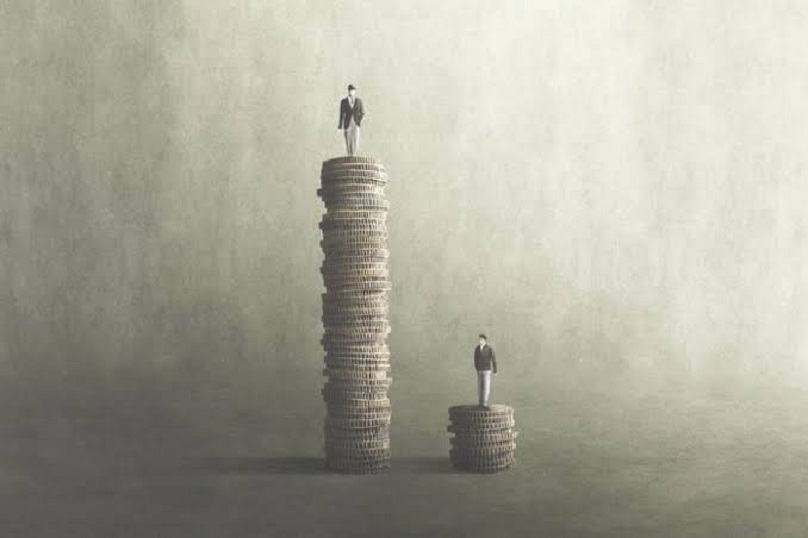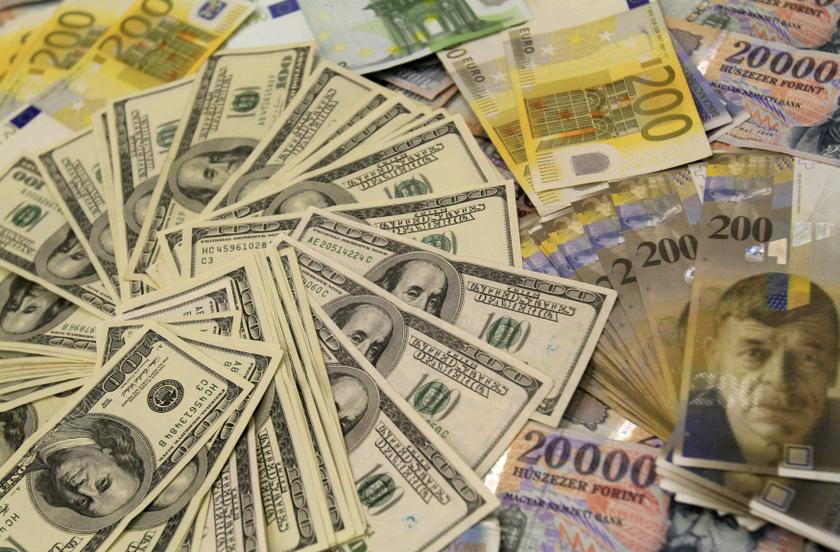
By Farhat Riyaz
In a world where data reigns supreme, the Oxfam Report has served all of us a clarion call, shedding light on one of India’s most pressing challenges: inequality. This report, a culmination of careful data aggregation from numerous sources, has become a vital resource for understanding the stark realities of income and wealth inequality in India. What it reveals is nothing short of shocking.
What compounds the concern regarding India’s severe wealth and income inequality is the eerie silence that shrouds this pressing issue. It’s a disquieting reality that very few of us seem to be discussing, despite the alarming data laid bare by the Oxfam report. In a nation of more than a billion voices, the conspicuous absence of public discourse on this issue is troubling.
While the report was released in earlier this year, I believe it’s crucial to address this critical issue now, even if it’s later than I would have preferred. As the saying goes, it’s better late than never.
One might expect such critical matters to be at the forefront of national conversation, but a perplexing silence envelops them. A search through the op-ed sections of major newspapers often yields little to no discussion on this report or the broader issue of inequality. It’s as if we’ve collectively chosen to look the other way, ignoring the glaring disparities that are corroding the social fabric of our nation.
As of 2023, India stands as one of the most unequal countries in the world, grappling with soaring levels of both income and wealth inequality. The Oxfam report, titled “Survival of the Richest: The India Story,” pulls no punches in its revelations. It lays bare a staggering truth: the richest 10 percent of the Indian population lay claim to an astonishing 77 percent of the nation’s wealth, while the top 1 percent holds over 40 percent of this wealth.
Let’s pause and ponder the implications of these numbers. In a nation celebrated for its diversity and unity, the concentration of wealth in the hands of a few is staggering. The top 10 percent of the population, a tiny fraction, commands a lion’s share of the nation’s resources, leaving the rest to fight for the remaining crumbs. Such wealth disparity is not only a moral issue but also a pressing economic concern that demands our immediate attention.
In 2017, a whopping 73 percent of the wealth generated within India flowed into the coffers of the richest 1 percent. On the other side of this vast chasm, the poorest half of the population, a staggering 670 million individuals, experienced only a paltry 1 percent increase in their wealth. This jarring inequality showcases the harsh reality of unequal income and wealth distribution within the country.
Adding to the complexity of this issue is the meteoric rise of billionaires in India. In the year 2000, there were just nine billionaires, but fast forward to 2017, and the number had surged to a jaw-dropping 101. This explosion in billionaire status speaks volumes about the growing concentration of wealth among the super-rich elite.
But it doesn’t stop there. Between 2018 and 2022, India is poised to mint an astounding 70 new millionaires every single day. This rapid growth in the millionaire class is a clear indication that wealth accumulation is not solely the domain of the ultra-wealthy. A burgeoning affluent middle class is on the rise, bridging the gap between the super-rich and the rest of society.
Perhaps the most staggering revelation is the exponential growth of billionaire fortunes over the past decade. Their collective wealth has skyrocketed nearly tenfold, reaching a point where it surpasses the entire Union budget of India for the fiscal year 2018-19, which stood at a staggering INR 24,422 billion. This eye-popping wealth accumulation serves as a stark reminder of the gaping wealth divide in our nation.
These statistics leave no room for doubt – India is grappling with profound income and wealth inequality. But the Oxfam report goes beyond merely presenting grim figures; it serves as a clarion call for urgent action. The need for policies and initiatives that address this issue is undeniable. It’s a multifaceted challenge that necessitates a comprehensive approach, spanning taxation, social programs, and economic reforms.
Moreover, the report underscores the need for active participation and vigilance from civil society and citizens alike. It’s not just a government issue; it’s a societal one. The battle against inequality requires collective effort and unwavering dedication to the cause of creating a more equitable and just society for all.
One glaring absence in India’s fiscal policy is the lack of a wealth tax – a tax levied on one’s entire property in all forms. Other countries, notably in Latin America, have introduced progressive annual wealth taxes or one-time solidarity taxes on wealth.
There’s no reason why India cannot follow suit. This is the opportune moment to introduce a progressive wealth tax, along with other fiscal measures, to reverse the disconcerting trend of growing inequalities in our nation.
It’s high time we acknowledge the stark realities laid bare by the Oxfam report. Income and wealth inequality in India are not mere statistics; they are lived experiences for millions. As we grapple with these challenges, it’s crucial that we consider a wealth tax as a potential tool to address inequality head-on. The time to act is now, to pave the way for a fairer, more just, and inclusive India.
We must recognize that addressing inequality isn’t a partisan issue; it’s a matter of national importance. It transcends political affiliations and should unite us in our quest for a more equitable and just society. It’s not just about pointing fingers; it’s about finding solutions and forging a path toward a fairer future for all.
Views expressed in the article are the author’s own and do not necessarily represent the editorial stance of Kashmir Observer.
- The author can be reached at zarnainriyaz13@gmail.com
Follow this link to join our WhatsApp group: Join Now
Be Part of Quality Journalism |
Quality journalism takes a lot of time, money and hard work to produce and despite all the hardships we still do it. Our reporters and editors are working overtime in Kashmir and beyond to cover what you care about, break big stories, and expose injustices that can change lives. Today more people are reading Kashmir Observer than ever, but only a handful are paying while advertising revenues are falling fast. |
| ACT NOW |
| MONTHLY | Rs 100 | |
| YEARLY | Rs 1000 | |
| LIFETIME | Rs 10000 | |












